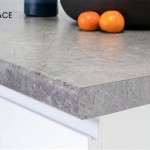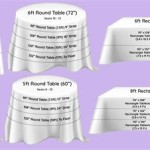Best Area Rug Under Dining Room Table: A Comprehensive Guide
Selecting the optimal area rug for placement under a dining room table requires careful consideration of several factors, including size, shape, material, pile height, color, and pattern. This guide aims to provide a comprehensive overview of these elements, enabling individuals to make informed decisions that enhance both the aesthetic appeal and functionality of their dining spaces.
Determining the Ideal Rug Size and Shape
The primary purpose of a dining room rug is to define the dining space and protect the flooring beneath the table from scratches and spills. Crucially, the rug should be large enough to accommodate all dining chairs, even when pulled out and away from the table. A rug that is too small will make the room feel cramped and can create a tripping hazard as chairs catch on the edge. A rug that is too large can overwhelm the space and detract from other design elements.
As a general rule, the rug should extend at least 24 to 36 inches beyond the edge of the table on all sides. This allows ample space for chairs to be comfortably pulled out without sliding off the rug. For rectangular or oval tables, a rectangular or oval rug mirroring the table's shape is typically the most visually appealing and functional choice. For round tables, a round or square rug can be equally effective. Square tables benefit from square rugs, providing a balanced and symmetrical look. The dimensions of the table should be measured precisely before selecting a rug to ensure proper proportions and coverage.
Consider the overall dimensions of the dining room itself. In smaller dining areas, a rug that is too large can make the space feel even smaller. In larger rooms, a smaller rug may appear insignificant. The goal is to achieve a balance that complements the room's size and shape while providing adequate coverage under the dining set.
Selecting Durable and Practical Rug Materials
The material of a dining room rug is a critical factor to consider due to the high-traffic nature of the space and the potential for spills and stains. Durability, ease of cleaning, and stain resistance are paramount. Several materials stand out as particularly well-suited for dining rooms.
Wool is a classic choice for rugs, renowned for its durability, stain resistance, and luxurious feel. Wool rugs are naturally resilient and can withstand heavy foot traffic. They also have a natural lanolin content that helps to repel spills and stains. However, wool rugs can be relatively expensive and may require professional cleaning. Consider wool blends to lower the cost without sacrificing too much durability.
Synthetic materials such as polypropylene and nylon are excellent choices for dining rooms due to their exceptional durability, stain resistance, and affordability. Polypropylene rugs are particularly resistant to water and stains, making them ideal for families with children or pets. Nylon rugs are known for their resilience and ability to withstand crushing from furniture. Both polypropylene and nylon rugs are relatively easy to clean and maintain, often requiring only spot cleaning with soap and water.
Jute and sisal rugs offer a natural and textured look, but they are not as stain-resistant as wool or synthetic materials. Jute rugs are softer than sisal, but both are porous and can absorb spills quickly. Sisal is generally more durable than jute. While these natural fiber rugs can be treated with stain-resistant coatings, they may require more frequent cleaning and are not ideal for households prone to spills. These natural rugs work best in a dining space with less usage.
Consider the pile height of the rug. A low-pile rug is generally preferred for dining rooms as it is easier to clean and prevents chairs from getting caught in the fibers. High-pile rugs, such as shag rugs, can be difficult to clean and can make it challenging to move chairs around the table. A flatweave rug, with virtually no pile, is an excellent option for seamless movement of chairs.
Choosing the Right Color and Pattern for Your Dining Room Rug
The color and pattern of a dining room rug can significantly impact the overall aesthetic of the space. The choices should complement the existing décor, including the wall color, furniture style, and flooring. Consider the desired mood and atmosphere of the dining room when selecting a rug.
Darker colors, such as navy, gray, or brown, are practical choices for dining rooms as they can help to conceal stains and spills. These colors also tend to create a more formal and sophisticated atmosphere. However, dark rugs can make a small room feel even smaller. Lighter colors, such as beige, cream, or light gray, can brighten up a space and make it feel more spacious. However, lighter rugs may show stains more readily and require more frequent cleaning.
Patterned rugs can add visual interest and personality to a dining room. Geometric patterns, such as stripes or chevrons, can create a modern and contemporary look. Floral patterns can add a touch of elegance and sophistication. Traditional patterns, such as Oriental or Persian designs, can create a warm and inviting atmosphere. Consider the scale of the pattern in relation to the size of the room. A large pattern can overwhelm a small space, while a small pattern may get lost in a large room.
Solid-colored rugs offer a clean and minimalist look that can complement a variety of décor styles. A solid rug can also provide a neutral backdrop that allows other elements in the room, such as the dining table and chairs, to take center stage. When choosing a solid-colored rug, consider the texture of the material. A textured rug can add visual interest and prevent the rug from looking too flat or boring.
Consider the existing color palette of the dining room. The rug should complement the wall color, furniture color, and flooring color. You can choose a rug that matches the existing colors or opt for a contrasting color that adds a pop of visual interest. Use a color wheel to help determine complementary colors that work well together.
When selecting a rug, consider the amount of natural light in the dining room. In brightly lit rooms, you can afford to use darker colors or bolder patterns. In dimly lit rooms, lighter colors and simpler patterns will help to brighten up the space. Also, consider the lighting in the dining room at night, as artificial light can affect how colors appear.
The overall style of the dining room space is vital. The rug should align with this. A modern dining room might benefit from a rug with a geometric pattern and minimalist design. A traditional dining room may be best suited to a rug with an oriental pattern and rich colors. A casual dining room could use a jute or sisal rug. Consider the material, pattern, and color that best reflect the chosen design.
Consider the budget for the dining area rug. The price of the area rugs can vary significantly based on size, material, and design. Set a budget before shopping, and then focus on the rugs that fall within the range to avoid overspending. Keep in mind that a higher-quality rug may last longer and look better over time, making it a worthwhile investment.
Ultimately, the best area rug for under a dining room table is one that complements the space's overall aesthetic while being durable and easy to maintain. By carefully considering size, shape, material, color, and pattern, a selection that enhances the dining experience and provides long-lasting value can be made.

Simple Rules For Dining Room Rugs Floorspace

The 14 Best Boho Dining Room Rugs Of 2024

6 Rules For Choosing A Dining Room Rug Pretty Souces Stonegable

How To Choose The Best Area Rugs For Dining Rooms

What Size Rug Under Dining Table Here S The Best Way To Find Righ

Best Dining Room Rugs 2024

12 Best Rugs For Your Dining Room Area

6 Rules For Choosing A Dining Room Rug Pretty Souces Stonegable

7 Farmhouse Dining Room Rug Ideas Ruggable Blog

Rules Of Thumb For Rugs Under Round Dining Tables Inspiration








